|
Virtual reality has been moving mountains across a myriad of verticals. In the past few years, we’ve also been seeing VR as a force for social good. REM5, a Minnesota-based company, is doing just that with a virtual exhibition space called “1 City. 2 Realities.” which is part of their REM5 For Good initiative. It illustrates and educates people on the realities of racial inequity and inequality across the nation.
Tackling Racial Inequity in Virtual RealityThis year on March 21, we celebrate the International Day for the Elimination of Racial Discrimination. The theme for this year is “Youth standing up against racism.” In the digital era, we’re seeing a new wave of activism and social movements, which rely heavily on technology to promote social, economic, as well as environmental change. According to REM5 co-founder, Amir Berenjian, they wanted to create a virtual space for sharing different stories about racism and discrimination. Also, they wanted to bring discussions about racial inequity to a meaningful space. Thus, REM5 For Good created “1 City. 2 Realities.”, which highlights the harsh truth about racial discrimination throughout the US. To make the experience as educational and immersive as a real exhibit, they used VR to power it. The immersive nature of VR makes it highly engaging. Additionally, it enables a forum for social interaction, allowing its users to start those difficult conversations about race and racism. As you enter the exhibition space, you can view the displays at your own pace. You can also engage with other users. Although you can only hear other users who are close to you in the virtual space, you can engage with anyone regardless of their location. The “1 City. 2 Realities.” exhibit even comes with a virtual idea board that you can follow using your mobile device. Virtual Reality as a Tool Against RacismREM5 For Good has two main objectives. They are as passionate about K-12 education and cultural competence as much as emotional intelligence education for large companies. They’ve worked with over 15,000 users and enterprises, such as General Mills, Target, Boston Scientific, and the University of St. Thomas. On Martin Luther King Jr. Day, Target and General Mills provided their employees with access to “1 City. 2 Realities.” This powerful tool helped raise awareness about racial inequity and racism by sharing real-life stories of racial discrimination. Moreover, it illustrated the impact of racism on communities. The virtual exhibit provides a safe space for participants to learn and reflect on their actions without fear of judgment. After every session, employees are given a chance to talk about their realizations and listen to others. From there, these institutions can work on addressing racial inequality within their respective systems. They can make positive changes to create fair and inclusive workspaces for their people. https://arpost.co/2021/03/21/virtual-reality-fight-against-racial-inequity/
0 Comments
REM5's Co-Founder, Amir Berenjian, joins Coruzant Technologies for the Digital Executive podcast. He shares how his technology is bringing education around social justice, inequality, and even Major League Baseball in an immersive VR space.
https://coruzant.com/profiles/amir-berenjian/ Twin Cities musician Lady Midnight is known for powerful stage performances, but like many other artists, she’s pivoted in the pandemic era. Her latest project, “Practice for Relief,” is an immersive virtual reality experience featuring sounds meant to promote calm, peace and healing.
MPR News host Cathy Wurzer talked with Lady Midnight about the project, and how she’s weathering the challenges of the past year. You can find more about “Practice for Relief” at her Instagram. https://www.mprnews.org/story/2021/02/19/twin-cities-artist-lady-midnight-moves-from-stage-to-virtual-reality It’s still just a bit chilly for baseball, but that doesn’t mean you can’t get an early start on the season virtually. Twins XR: A Virtual Hall of Fame Experience is officially open, and all you need is a web browser (or a slick VR headset) to hop into a virtual clubhouse and take a trip through Twins history.
REM5, a Minneapolis-based virtual reality company, is the mastermind behind the experience. So, we caught up with Amir Berenjian of the VR outfit for a quick Q&A about the Twins, Easter eggs, and how VR can be used for the good of the community. tech.mn: Walk us through the inception of Twins XR. How did you get connected with Minnesota Twins and what was the collaboration process like? Amir Berenjian: Since the pandemic slowed our ability to make high-end VR accessible by literally putting VR headsets on folks, we have invested a lot of time in building WebXR experiences that can be accessed on a regular desktop in a web browser. After running several successful WebXR events last year including art exhibitions, presentations, live concerts, conferences, etc. we were ready to move on to the big leagues (pun intended). With our traditional VR business, we’ve had ongoing conversations with most of the pro sports teams in town, so we naturally planted some seeds about how to use WebXR for creatively engaging fans, both locally and around the globe. The Twins were targeting an in-real-life Hall of Fame experience in January that was canceled so the stars really aligned for bringing this Virtual Hall of Fame experience to life. tech.mn: Is this the first collaboration you’ve done with an organization like the Twins? Do you think REM5 will do more of these types of projects in the future and, if so, what type of virtual experience would be your “dream project”? Amir Berenjian: Where we really win is when we can help an organization solve a problem with some help from immersive technology so we’re always excited to find new high-value use cases like this. We’ve worked with a wide variety of groups to date but Twins XR is by far the most ambitious with an attendance goal of 10,000 fans over the two-week period. The need for more digital, social experiences is only going to increase in the years to come so we want to keep pushing the limits of this platform. tech.mn: These virtual experiences seem like the perfect opportunity to include hidden Easter eggs for users to stumble across. Secret rooms, hidden displays… things like that. Have you ever thought about including that type of feature? What fun Easter eggs would you include if you did? Amir Berenjian: If I just told you that would take all the fun out of it… tech.mn: Tell us about REM5 For Good. How can VR be used for the overall good of the community? Amir Berenjian: That is really where the foundation of REM5 is built – how do we use this technology for social good. The two areas we spend most of our time on at REM5 for Good is K-12 education and diversity and inclusion training where immersive technology can be used as a very powerful storytelling medium. One of the first exhibition spaces we built in WebXR is called “1 City. 2 Realities.” and highlights the racial inequalities here in MN through data visualization, photos, and video. We recently partnered with RFTP to bring this experience to the University of St. Thomas as an innovative educational tool for both faculty and students and also partnered with HandsOn Twin Cities to bring it to Target and General Mills employees. tech.mn: Lastly, this seems to crack open the door for other partnerships with Minnesota sports teams. When can we expect a “VR Date with Ragnar” experience? Amir Berenjian: You just dream it up, and we’ll make it happen! Be sure to check out Twins XR: A Virtual Hall of Fame Experience. It’s free and only available for a limited time. https://tech.mn/news/2021/02/10/follow-up-five-qa-with-amir-berenjian-of-rem5?utm_campaign=coschedule&utm_source=twitter&utm_medium=TECHdotMN&utm_content=Follow-Up%20Five%3A%20QandA%20With%20Amir%20Berenjian%20of%20REM5 Will the pandemic finally make virtual reality more than just a fringe technology used by gamers?
With massive numbers of people sitting in their living rooms, musicians without venues to play in, and creatives needing new outlets, perhaps this is the year we see Antonin Artaud's 1938 vision of "la réalité virtuelle" come to fruition. People in the VR industry certainly have their hopes up. A recent report projects that its U.S. revenues will nearly quadruple by 2027 as the technology becomes more affordable. A basic, stand-alone Oculus Quest 2 headset now sells for $300. "I can have a very nice VR setup in my home and I don't have to buy a $2,000 computer to power it with, which was the case up until about a year ago," said Brian Skalak, director of marketing and events at St. Louis Park virtual reality company REM5. REM5 has a restaurant/arcade space that has been affected by the pandemic, but like many businesses, it's experimenting. One such project is a digital experience the Cedar Cultural Center is launching on Thursday. Designed by Skalak in collaboration with Adriana Rimpel — the singer/musician/composer better known as Lady Midnight — it can be experienced with a VR headset or even on your regular computer. As you enter "Practice for Relief," you are surrounded by trippy rainbow stripes and undulating designs. You walk over a bridge dotted with eyes that open and close and then reach a platform dotted with ritualistic-looking stones. That's when you hear Rimpel's meditative music, which shifts as you "walk" to different spaces on the platform. You might hear more languorous guitar playing, swelling synchronized airiness or the sound of abstracted waterfalls, depending on which stone you're near. Rimpel, a member of the Cedar's Artist Collective, got the idea of creating a VR experience after seeing an exhibition at Gamut Gallery that enlisted Skalak's expertise. The artwork could be seen only digitally, via goggles participants wore as they walked through the gallery. "I was really impressed with how they had been able to recreate this digital architecture within these goggles," Rimpel said. She decided to work with Skalak on a virtual version of something she had hoped to do in person, before the pandemic — gather musicians to work together improvisationally. "The virtual participant will be able to have different sound experiences based off of where they place themselves in a room, just like you would if you went to a regular show," she said. "I wanted to have three different audio streams, that would be able to relate to one." The launch of "Practice for Relief" takes place at 7:30 p.m. Thursday (register in advance at thecedar.org). It includes a question-and-answer session and you'll get a link that will take you to the virtual experience. If you don't have a headset, you can still view it on a computer. (It's best experienced using Google Chrome via a platform called WEBXR.) "We're able to build a virtual environment that you can get to simply by going to a web page," said Skalak. "It's a space that you can explore in three dimensions." Rimpel hoped to create music that has healing properties, so she used a certain sound frequency — 396 hertz — for its affect on the spirit. She had musicians Kavyesh Kaviraj, Jalyn Spencer and Ziyad Habib tune their instruments to that frequency as she gave them directions for their improvisation, focusing on grounding and the release of guilt and fear. "Sound is healing," she said. https://www.startribune.com/a-digital-experience-is-virtual-reality-the-next-frontier-for-twin-cities-artists/600012409/?refresh=true “I’m voting.” It’s a simple yet effective declaration that’s now on more than 40,000 buttons and stickers available at more than 50 businesses and arts venues in Minnesota.
Turn Up the Turnout, a nonpartisan voter turnout initiative, enlisted 22 artists, including 17 who are BIPOC or LGBTQ+, to design the buttons and stickers. Each artist received a $250 stipend. Committee member Anne Labovitz said that Turn Up the Turnout wanted to have a big event, but that wasn’t possible because of COVID-19. Instead, the group opted to focus on buttons, stickers and social media. People can pick up free buttons at the Weisman Art Museum along with dozens of stores, galleries and restaurants in the Twin Cities, Duluth and elsewhere around the state. To find locations, visit thecreativesconnector.com. There is also a short video about the project on view at the Weisman. “The buttons and stickers are more accessible to young people,” said Labovitz. “The pins are a little more trendy for a younger person, like Instagram posting.” She acknowledged that the initiative wasn’t specifically targeting young people exclusively, but definitely made sense for them. In Minnesota, voter registration for this election cycle is up 12% for youths ages 18-24. Visit @turnuptheturnout on Instagram to grab free filters created by REM5, a virtual reality lab in Minneapolis. Voters can also snap a selfie with the button or sticker and tag it on social media with #turnuptheturnout to be entered to win a Visa gift card worth $500. Entries accepted through Nov. 1. https://www.startribune.com/minnesota-artists-make-buttons-and-stickers-to-get-out-the-vote/572820662/ What: Blank Slate art exhibition
When: Friday, August 7, 5-9:30 p.m., Saturday, August 8, 7-9:30 p.m. Where: Gamut Gallery, 717 S. 10th St., Minneapolis Blank Slate attendees might be initially confused stepping into a gallery with completely blank walls—worry not. After putting on VR headsets, the gallery will be transformed. Featuring artists such as Black Daze, Evan Weselmann, Arianne Zager, Neal Breton, and Yuta Uchida, Blank Slate turns traditional gallery viewing on its head with an immersive celebration of color, line, form, and portrait. Guests will be treated to a half hour tour with a maximum of four attendees per slot (masks required), and afterwards, they’ll have an opportunity to discuss the experience in the courtyard with their group. I’ve been fascinated with virtual reality (VR) ever since I was a kid and first strapped into an antique rig at a local arcade back in Wisconsin. This fascination was reignited the first time I tried an HTC Vive and a Playstation VR about four or five years ago. At the time, I saw what was coming: a potentially immersive, disruptive technology that could change everything we knew about experiencing gaming and film. Unfortunately, the industry seems to not be able to find its footing as it stumbles with poor consumer adoption, lack of content, and traditionally high barriers to entry due to the cost to set up your own rig. Enter REM5, a virtual reality business co-founded by Amir Berenjian and Travis Hoium, with its consumer-friendly operation located in St. Louis Park. At its physical location and during non-COVID times, you can sit and enjoy an adult beverage while a VR concierge escorts you through a cultivated experience. There’s never a lack of employees; typically, REM5 staff have a 3:1 ratio of concierges to consumers, helping you have the best experience possible with the technology.
REM5’s entertainment business has a wide variety of rigs in the store, including HTC Vive Pro, Oculus Quest, and many more. Unlike the Void, REM5 takes a more intimate approach to VR, allowing you to have a cultivated, cozy experience in the location in St. Louis Park while drinking a craft beer. During normal operations, it tends to put about 15,000 people annually through experiences. This is just the tip of the iceberg for REM5, as it has numerous other endeavors, including a focus on education and what Berenjian calls “cultural competency,” which uses VR to amplify empathy for corporate employees or people looking to understand others’ lives. This business stratification is currently helping REM5 weather the current pandemic. This business stratification is rooted in the reason why Berenjian believes his company exists: to change the world for good through virtual reality. Berenjian comes from a background that cultivates entrepreneurship, stemming from his time in the investment banking industry focusing on mergers and acquisitions. In the mid 2010s, he first tried virtual reality and was floored by the potential of the technology and its ability to change the world. His focus is less on the gaming applications of the technology, but more on the effect that the technology can have on society through empathy-building and its ability to democratize experiences that are unattainable for some. This focus is best demonstrated by REM5’s education business. As soon as the pandemic struck, REM5 quickly updated its homepage and curated quarantine-friendly educational content, trying to connect parents and kids with additional at-home VR/AR content. One of the more prominent services allows students to rent out an Oculus Go and do virtual reality learning every Monday. Additionally, the business is hosting Zoom calls every week through a program called the Youth Innovation Lab, which is free for kids and focuses primarily on educational augmented-reality experiences. Typically REM5 also hosts in-person classes that focuses on STEM learning initiatives such as immersive tech 101 and designing for the future, and caters applications for healthcare, mental health, and building empathy among students. On top of all of these educational experiences, the company recently created a simulated art experience allowing you to walk through a digital art exhibit with an avatar, which is available across VR platforms. Berenjian is hoping to expand this virtual art exhibit capability to soon be used for other applications such as fundraisers, galas, festivals, and other virtual meetups to allow connections to occur outside your average weekly Zoom call. Like many entertainment companies, REM5 was forced to temporarily shutter its entertainment operations and furlough a significant portion of its staff due to the recent restrictions related to COVID-19. It reopened to the public on June 10 and can now to accept reservations with additional precautions to ensure safe indoor use of their equipment. To those Minnesota geeks who are still hesitant to visit the in-store location, REM5 can continue to help augment some of the at-home learning, or, better yet, take their kids out of Fortnite for a few hours. https://twincitiesgeek.com/2020/06/minnesota-company-rem5-focuses-on-vr-education-during-the-pandemic/ VIRTUAL REALITY FOR GOOD USE CASES: FROM EDUCATING ON RACIAL BIAS TO PAIN RELIEF DURING CHILDBIRTH3/9/2020 The use cases of virtual reality (VR) expand each day. It never fails to amaze me how powerful and versatile the medium is.
Here are just some examples of how this immersive medium is being put to good use. Raising Donations Inspired by the bravery and courage of the incredible children fighting cancer at St. Jude Children’s Research Hospital, VR for Good, Facebook, and St. Jude came together to create a VR experience that celebrates the real stories of survivors of childhood cancer and other life-threatening diseases. Created by BBDO and developed by Flight School, St. Jude Hall of Heroes is intended to help raise donations by giving donors the chance to see where their money goes and the people that it helps. The project uses VR as a storytelling and empathy machine. The experience is set on floating islands, each island has towering statues (heroism in battle is traditionally marked with a statue) that represent St. Jude patients and their stories. Users can walk up to these statues and hear from the patient about his or her fight against illness. The experience will be coming to the Oculus platform in early 2020, so keep your eyes peeled on the Oculus Store. Relieving Pain During Childbirth A small study has suggested that expectant mothers who use a calming virtual reality experience during labor could see their pain levels reduced. In a half-hour test conducted by Dr. Melissa Wong, an obstetrician-gynecologist at Cedars-Sinai Medical Center in Los Angeles, participants were asked to score the pain level of their contractions on a scale of 1-10. Those who used the VR headsets with the ‘Labor Bliss’ visualization for up to 30 minutes during contractions reported an average reduction in pain of 0.52, whereas those who didn’t wear the headsets experienced a pain increase of 0.58. While this is a small study, it does pave the way for offering the technology as an alternative to other pain relievers during childbirth. Training For High-Risk Situations Doctors and nurses in the emergency room (ER) work in a high pressure, high-stress environment, which sometimes involves making critical decisions. These emergency, low frequency, high stakes procedures are “life or death” cases and require a highly-skilled, highly experienced doctor. However, because of their relative rarity, the expertise needed is difficult to acquire. Medical professionals have traditionally trained on mannequins and cadavers, however, this method of training cannot fully replicate the other pressures that come into play in a real emergency. Two doctors from Children’s Hospital Los Angeles (CHLA) teamed up with AiSolve and Bioflight VR to address this issue, by creating a virtual trauma room that more accurately represents how real-life emergencies may play out. Within the experience, doctors are debriefed by the Emergency Medical Technicians (EMTs) on the patient’s condition, then they have to check vital signs, assess medication and carry out the best course of action. This is all done under a time constraint—as with a real emergency—so it requires doctors to focus and keep calm under pressure. This training tool enables trainee doctors to prepare for the real thing, without the fear of failure and its consequences. Educating on Racial Bias REM5, a virtual reality Lab in St Louis Park, Minnesota is using the power of immersive technology to allow students, teachers, artists, and community groups explore subjects such as racial and gender bias. Amir Berenjian, the Co-Founder of REM5, explained, "We want to use virtual reality for good. We don't ever want to view VR as a solution, but rather as a tool for this work. The real work comes when the headset comes off." As part of diversity and inclusion training, REM5 put around 800 Cargill employees through the New York Times 360-degree video documentary, ‘Traveling While Black’. The documentary gives users an immersive experience on the challenges black people in America still face to this day. Viewers are taken on an emotional journey where they meet various African Americans and hear their first-hand experiences with racism, told through interviews and poetic cinematic recreations. Feedback from users has been very encouraging, with many noting how much more impactful it is to experience a documentary in 360-degrees, rather than simply watching it on a TV screen. Breaking Barriers In The Transgender Community Authentically Us--the first documentary VR series from Facebook and Oculus--allows viewers to step into the lives of three transgender activists who are smashing glass ceilings and taking action to make communities safer for LGBTQ+ people everywhere. Users follow Aiden Crawford, Shannon Scott, and Acton Seibel in a 360-degree video as they campaign to change legislation, raise awareness, and challenge politics. Over three episodes, viewers come face to face with the everyday challenges a transgender person faces to live free and equal, through the viewpoints of three transgender identities: transmasculine, transfeminine and gender non-binary. Authentically Us has, at its core, a powerful message: those who identify outside of the gender binary are everyday people who have always been a part of our communities. |
Archives
August 2023
Categories |

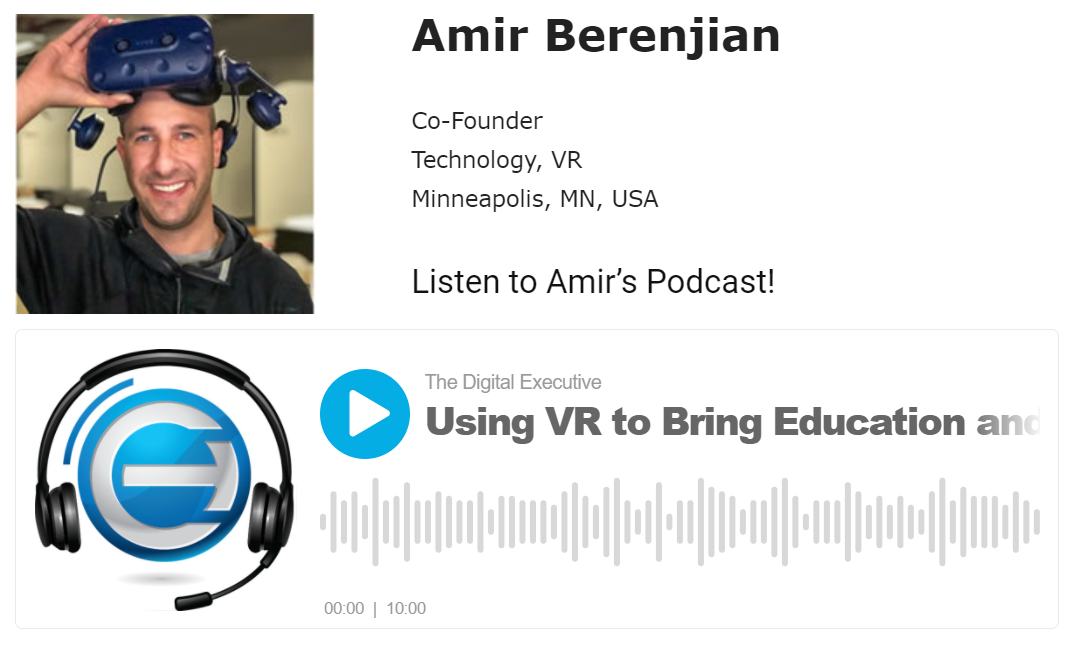
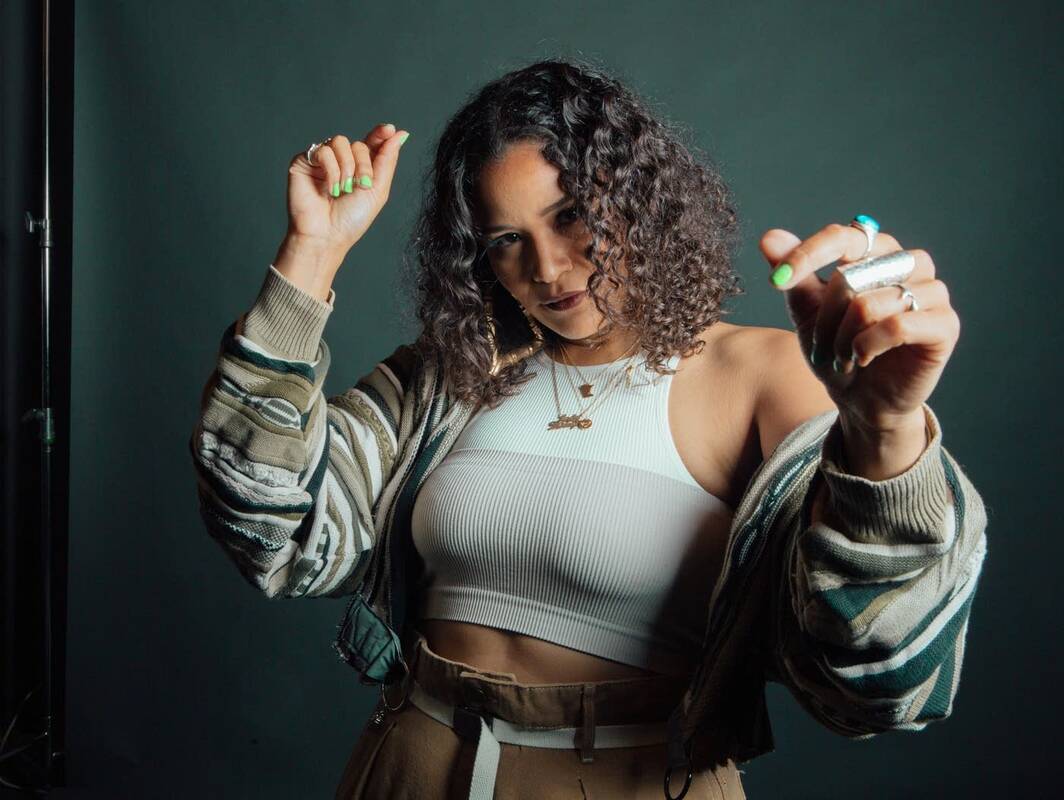
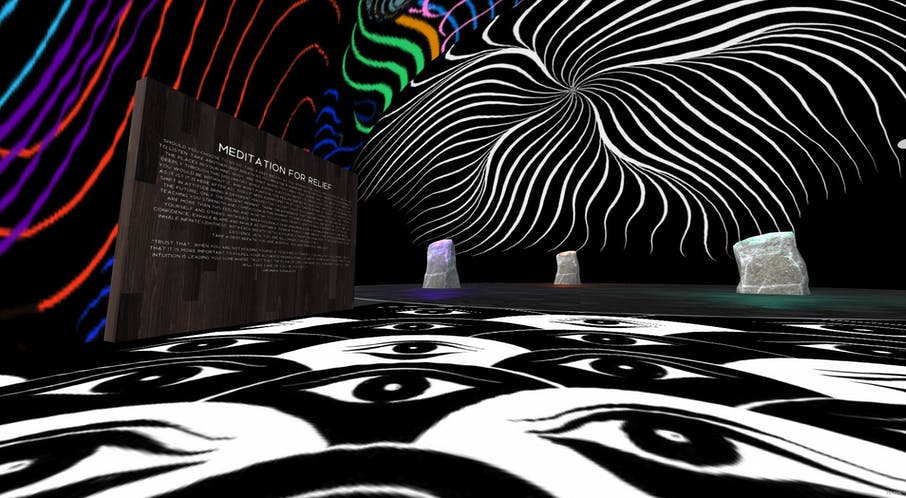
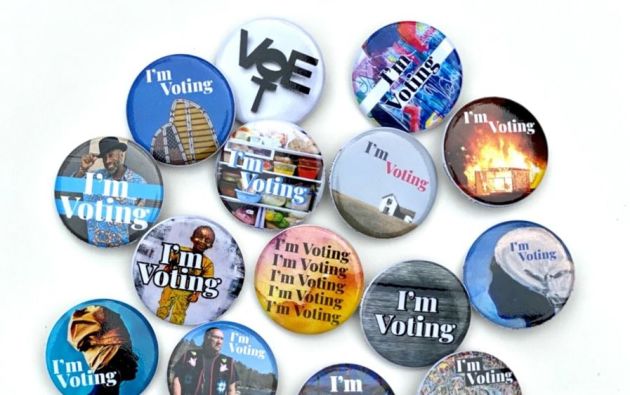
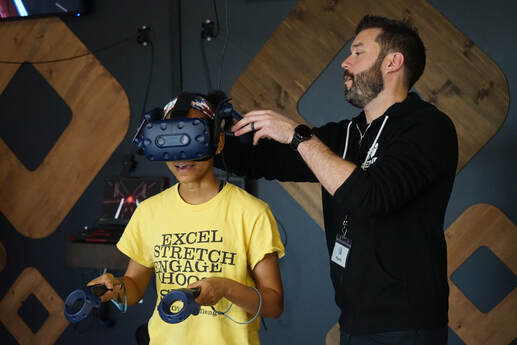
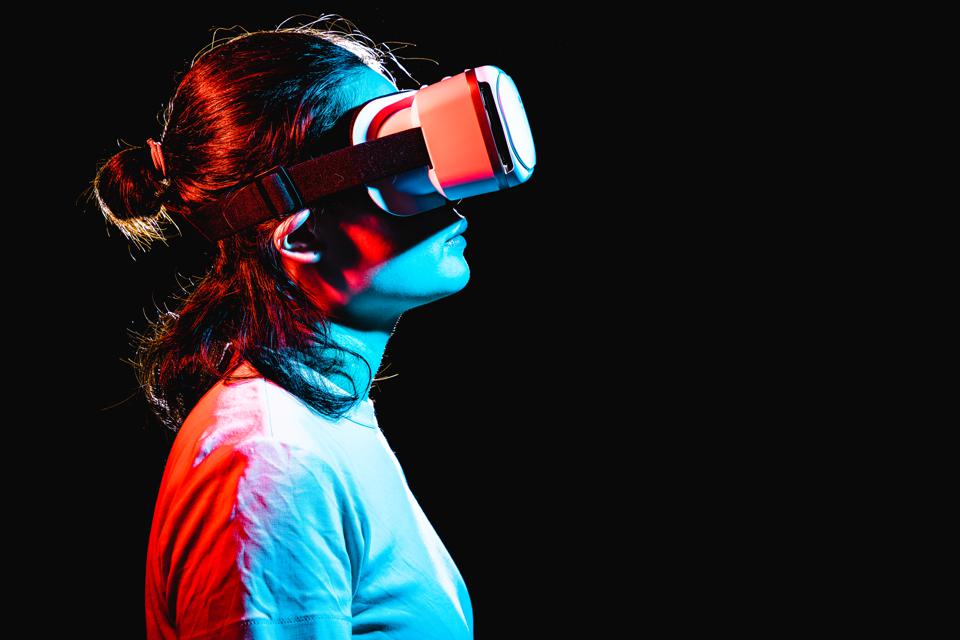
 RSS Feed
RSS Feed